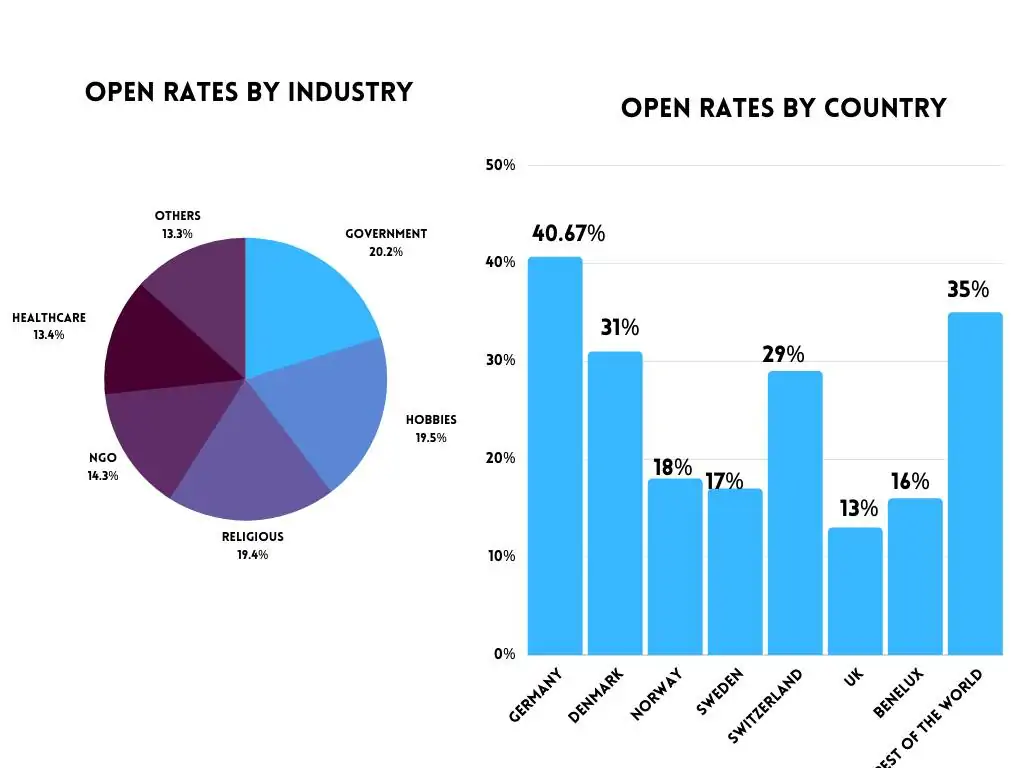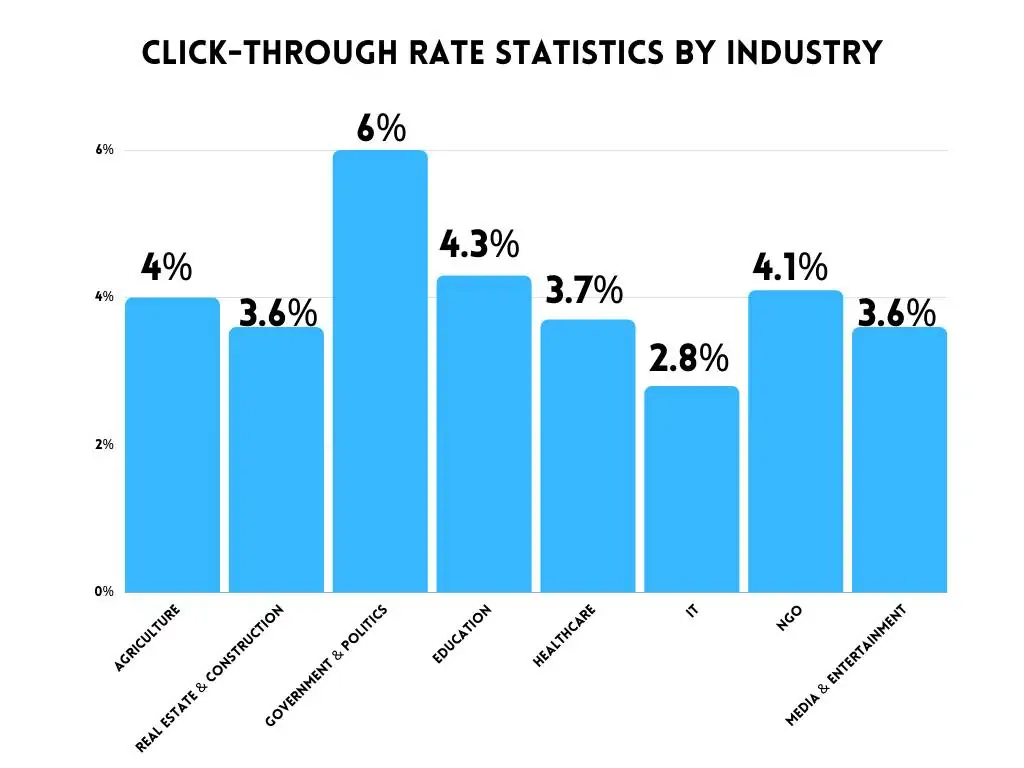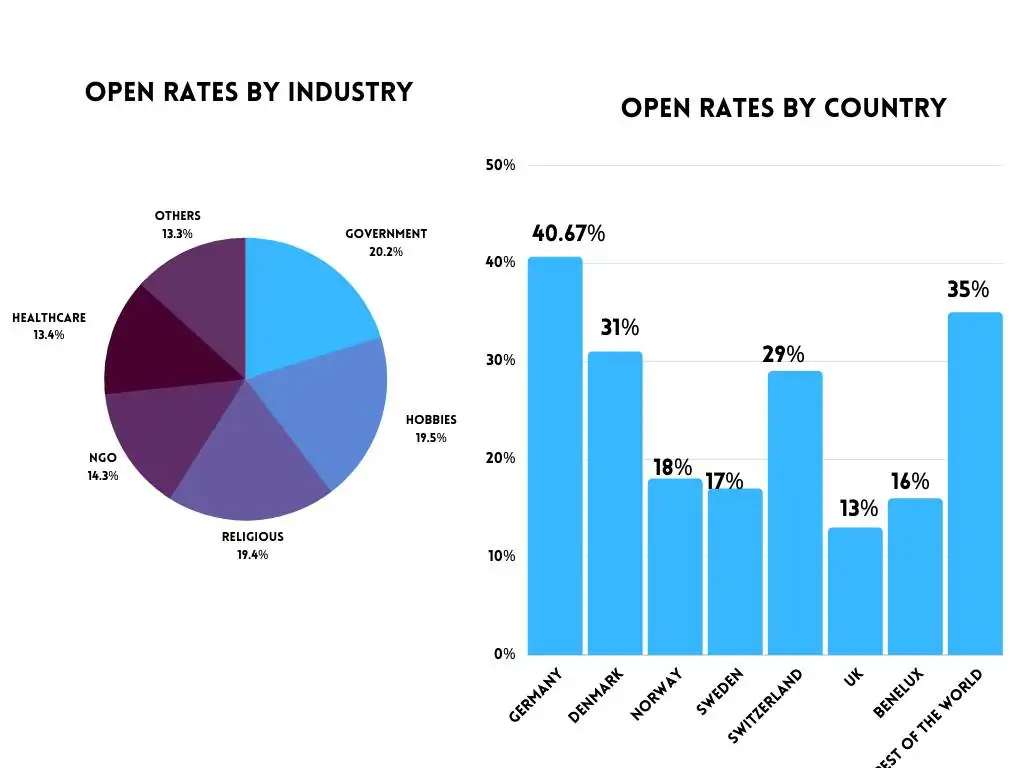The only thing more annoying than waiting for an important email is not being able to find it in the cluster of promotional newsletters you never read.
Did you know that only 35% of the people who subscribed to different retail emails have actually bought something? To make things worse, only 15% of that 35% of these ‘readers’ were returning customers that made multiple purchases.
Why are the statistics so disappointing, and how can they improve?
The answer to both questions is - email campaigns!
In lack of solid email marketing, brands not only fail to attract new customers, but they risk losing existing ones. If you don’t want to be one of them, follow our comprehensive guide to creating a winning email campaign.
Are you ready to reserve yourself a spot on the good side of the statistics?
Let’s dive in!
Learning the Basics - Email Marketing Explained
Email marketing includes sending promotional or informational emails to a group of people who have signed up for your newsletter. These future recipients have also permitted you to keep them updated via regular email content. The intent of email marketing is to inform or drive sales. But as of late, businesses have started using it for building brand awareness and customer loyalty as well.

92% of adults use email, while 99% of them check their emails daily. This notion led to emails becoming an inseparable part of marketing. Emails are the most prominent source of ROI for 59% of sellers. If used properly, they can be the most powerful tool in any business’s arsenal. The odds are ever in favor of B2B. After all, B2B brands have 47% higher CTRs as compared to B2C, and an astonishing 59% of B2B sales were generated through email.
How Does an Email Campaign Compare to Social Media Marketing?
1. Convenience and accessibility
While generation Z and millennials are comfortable using social media, generation Y is not so tech-savvy. The biggest advantage of email marketing over social media marketing is the fact that brands can distribute their message to all age groups.
2. Security
Social media marketing is primarily based on building a large follower base, making connections, and racking up likes to drive more sales. However, your social media channels may disappear in a split second, leaving you with nothing to work with. Email marketing, on the other hand, is based on building email lists of potential and existing buyers that are forever yours to keep.
3. Cost-effective
Both email marketing and social media marketing are super affordable if you choose to do them both yourself. If you decide to outsource, know that social media marketing experts charge high rates. Also, there are a number of tools online that can help you with email marketing for a fraction of the price (or even for free).
You can make good use of tools such as:
• ConvertKit;
• Sendinblue;
• HubSpot;
• Mailerlite;
• Aweber.
Should you decide to start promoting your business by email on your own, the first thing you need is an email campaign.
How to Create an Email Campaign That Promises Results
If you’re new to the world of email promotions, you are likely still trying to grasp the idea of basic email marketing. For a moment, you might feel like you’ve been thrown to the wolves.
The good news is, you can follow our guide on creating a winning campaign and learn how to run with them!
1. Set Goals
Before you can do anything else, you have to know why you’re doing it in the first place. Identifying your goals will bring you a step closer to achieving them.
Most goals are centered around:
• Welcoming new subscribers;
• Improving engagement;
• Building brand awareness;
• Increasing website visits;
• Boosting profitability;
Without a well-structured email list, all your marketing efforts will go in vain. The easiest way to gather more contacts is through website traffic. You can place a banner or a pop-up window on your website asking people to leave their email.
Remember, don’t neglect copywriting! Your banner or pop-up window has to be captivating and fun, thus triggering people into giving you their email address.
If users aren’t subscribing, offer an incentive instead. You can email a discount code to any person who signs up for your newsletter, provide a free downloadable asset, or give them a bonus giveaway entry.
Although buying email lists is not illegal, the act of sending marketing emails to the people on those lists might be. This is so because you technically don’t have their consent.
Another thing to note is that purchased and borrowed lists may not contain information about your target audience. Every digital marketing specialist advises against purchasing email lists.
But, if you decide to take this step, double-check the laws and regulations in the state where those contacts reside.
3. Segment to Target Through Your Email Campaign
Your email subscribers come from different age groups, ethnicities, or genders. They also will have different needs. Therefore, email list segmentation is the way to go if you want to target the right audience.
If you’re selling men’s shoes, you can set the segmentation parameter to males. Thus, you will avoid sending unwanted emails and risk losing your female subscribers. Also, segmentation offers you a unique chance to show your subscribers that you’re truly invested in meeting their specific needs.
Counter-intuitive as it may sound, you should also clean your email list regularly.
Namely, if a large number of your contacts are inactive, you can seriously damage your engagement levels. Most email providers nowadays offer automatic removal of inactive subscribers.
This way, you don’t need to worry about losing precious time on manual “cleansing.”
4. Stand Behind Your Words
Once someone subscribes to your list, make sure to send out a welcome email (you can create an automated email sender. In other words, create a welcome message on almost all email service providers). The welcome email should not only serve as an introduction, but also it should notify people about what they can expect.
If you say that you’ll send emails once a week, don’t make it a daily habit. If you commit to using your automated email sender daily, don’t let your subscribers down by leaving them hanging for a month. Consistency is key, and if you made a promise, stick to it. This is the first step toward building a stellar reputation and letting people know that you’re trustworthy.
5. Write Persuasive Subject Line and Copy
To get your subscribers instantly hooked, you need the best subject line you can come up with. The subject line offers a portal to the recipients’ undivided attention - and ultimately, their pocket. The subject of your email should be short (no longer than 50 characters). It also has to be memorable and clearly indicate what the reader can expect from your offer.
If your subject line is on-point, the recipient will open your email and give you a chance to pitch what you’re selling. Here’s where a strategically planned copy takes the scene!
The content of your message should be simple yet powerful. That said, don’t introduce your offer too soon. Instead, start by establishing credibility and making the reader feel comfortable first - before you get down to business.
The goal of the email copy is to convince the readers that they’re the ones who’ll benefit from the purchase, not you. Include a call-to-action at the end of your email and watch the magic happen!
6. Create an Aesthetic That Sells
Well-structured and aesthetically pleasing emails are more likely to hold the reader's attention and drive more sales.
Don’t just write walls of text for the sake of writing. Instead, break your copy into short lines and paragraphs. You can use images as well, but don’t overdo the visual impact as it can take away from your content. Also, when using images, don’t forget to include relevant alt tags to help people using screen readers get your message loud and clear.
You don’t have to hire an email designer to get the job done. In fact, most email services offer some sort of a Drag & Drop editor. Alternatively, you can use a pre-made template if your email service provider offers one. Just add your personal touch by customizing it.
Many existing websites already offer free template designs, such as:
• Sendinblue;
• Litmus;
• Dyspatch;
• Stripo;
• Antwort.
And, don’t forget about building responsive design. Most people check their email from a phone or tablet, so make it easy for them to read your email and take action.
7. Make an Email Schedule
As previously mentioned, consistency is key to building long-term relationships with your subscribers. A great approach to being consistent is scheduling your emails ahead of time.
Another thing to keep in mind is the most suitable time to send emails to your target audience. If you’re in the B2B sector, sending emails in the morning is better than sending them after work hours. In case you’re offering goods or services to consumers, you should consider sending emails in the evening when most subscribers are out of the office.
To make sure you don’t forget to send an important email, you can rely on an automated email sender.
8. Test and Measure Your Results
You should be aware of how your email campaign is performing at all times. It’s important to know whether you’re losing subscribers, are your subject lines doing good, and how many clicks you get on your CTA buttons.
However, if you’ve tested and compared your click-through rates to the click-through rates of businesses from other industries and they’re higher than yours, don’t be discouraged.

Remember to check what devices your customers use and the timing of your emails. You can track the results manually since most of the email service providers come with an analytics dashboard that provides information on:
• Open rate - the number of people who opened your email divided by the number of people the email was sent to.
• Unsubscribe rate - the total number of people who have unsubscribed divided by the total number of people who received your email.
• Click-through rate - the sum of people who clicked on a link in your email divided by the total number of recipients.
• Bounce rate - the total sum of undelivered emails divided by the total number of emails sent.
You can also rely on the efficiency of an email tracking software that can provide insightful information about your email campaigns, such as:
• Outreach;
• Freshworks CRM;
• GMass;
• HubSpot Sales Hub;
• SalesLoft.
9. Perform Regular A/B Testing With Your Email Campaign
If you perform A/B testing regularly, you’ll see that small changes can make a big difference. A/B testing can be as broad or shallow as you need it to be. You can test subject lines, CTA buttons, or you can test the whole email template.
To do so, you need to create two different variations and send them to two different subgroups of subscribers. If you’re testing subject lines, write two different samples and see how they’re performing. You can easily determine the better variation by looking at the open rates.

10. Give Your Customers the Option to Unsubscribe
Having a lot of subscribers is not necessarily a good thing for your email campaign.
What happens when you keep sending emails to people that are not interested in reading them? Your business will likely suffer.
Put yourself in the reader's shoes; wouldn’t you get annoyed if someone was spamming you with something you have no interest in? Having people put you in the spam folder or just not opening your emails can mess up your email analytics. What’s more, word of mouth is a dangerous, dangerous thing. With it, you risk losing potential customers if your subscribers feel trapped in your email list and decide to spread the word.
The unsubscribe button can save you all that trouble and help you prove your credibility.
Test, Measure, Improve - Repeat!
The potential of advanced as well as basic email marketing is out of this world. Whether you’re just learning the ropes of basic email marketing or you’re an experienced marketer that’s been around for a while, remember to constantly update and improve your email campaign.
It’s the only way you can swim with the sharks from your industry and not get eaten up!
